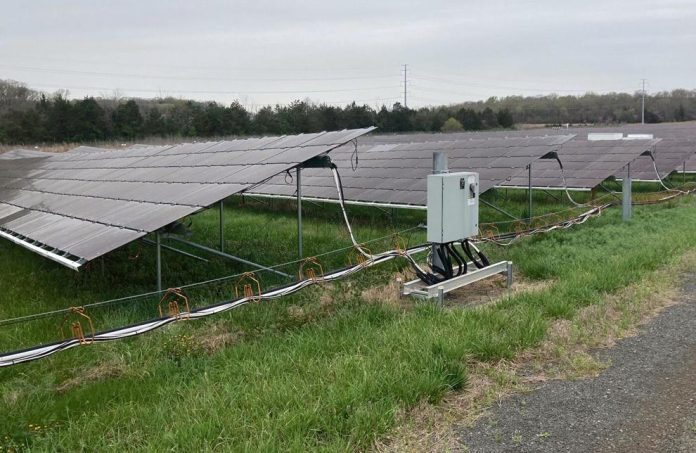Solar energy in Kenya is being hailed by experts as a game-changer. Generating power from the East African nation’s sunshine can potentially revolutionize its energy sector in terms of cost-effectiveness and scalability.
Solar power is experiencing a significant surge in Kenya. In a parallel narrative to recent developments in Croatia, it appears that for numerous individuals, the surge in activity is not solely motivated by environmental concerns.
Solar energy has emerged as the more cost-effective option — and this is the primary reason behind its growing popularity.
In a remarkable display of sustainable living, Hezel’s house in Nairobi boasts a state-of-the-art solar plant adorning its rooftop. She harnesses the power it generates for a wide range of purposes.
“Heating, lighting. I only use electricity for the cooker,” Hezel told DW.
In a recent statement, German Chancellor Olaf Scholz bestowed high praise upon Kenya, referring to the country in East Africa as a “climate champion and model.”
Kenya has managed to meet a staggering 80% of its power demand through the utilization of green energy sources.
Kenya has set its sights on achieving a remarkable feat by the year 2030 — a goal of reaching a 100% mark.
The focus on geothermal energy has been prominent thus far. However, the significance of solar energy is steadily growing.
Positive move
The surge in the use of solar energy is a welcome development for many Kenyans given that the country suffers from a persistent issue of frequent power outages.
A number of residents have turned to utilizing sizable diesel generators as a contingency plan. However, the exorbitant costs associated with these generators have rendered them unattainable for a significant portion of the population.
Also, some remote regions in Kenya remain disconnected from the national power grid. The advent of solar energy has ushered in a new era of independence for individuals, said Annissa Osman, CP Solar’s CEO.
“Maybe 15 years ago the only solar item people used was a calculator. Now more and more people are looking to adopt more solar in their everyday life,” Osman said.
Five years ago, Osman created CP Solar which boasts a diverse clientele including trade, industry, and private customers.
Cost effective
Hezel, like many Kenyans, did not opt for solar energy solely out of a desire to safeguard the environment and combat climate change. She said it is a cost-effective alternative to relying on Kenya’s primary energy provider.
“It is a lot cheaper than what Kenya Power charges,” Hezel said.
Since making this eco-conscious decision, she said her electricity bill has experienced a significant decline.
Today, Hezel finds herself paying a mere one-third of her previous expenses, a substantial reduction that has undoubtedly left her both delighted and financially relieved.
Huge Potential
A recent study conducted by the Kleinman Center for Energy Policy at the University of Pennsylvania reveals that Kenya has emerged as a global leader in solar energy generation — creating favorable conditions for harnessing solar power.
According to the report, for Kenya’s ambitious goals to be achieved, the country must take more proactive measures and enhance its geothermal energy resources alongside wind and solar power.
There are already a number of solar power stations in operation in the country, contributing to the country’s national grid with a steady supply of electricity.
In Garissa, for example, lies the largest one. With a staggering power output of 55 megawatts, the facility has the ability to generate electricity that can meet the needs of over 600,000 households. Constructed by a prominent Chinese corporation, this entity has been in full operation for a span of three years.
Previously, it was primarily Western companies that held the reins in this sector. Charles Ngare, the CEO of Chloride Exide, a prominent solar panel manufacturer, said there has been a significant shift in the situation.
“We found that solar panels from the Far East were actually much cheaper than we would produce them,” Ngare told DW.
Ngare added that, “no other country produces solar plants in Kenya anymore. The competition from China is simply too strong.”
Energy source of the future
Kenya’s market bears witness to China’s undeniable dominance, as evidenced by the exclusive reliance of Chloride Exide, on Chinese suppliers for all their large-scale solar panels adorning the roofs of their factory halls.
In the sprawling factory halls, the company diligently manufactures a wide range of products, including car and solar batteries.
The production process is known for its high energy consumption. But thanks to the implementation of solar panels, the company has managed to reduce a portion of its energy expenses. Charles Ngare said this means that the future of energy in Kenya is solar.
“Solar energy is actually booming in Kenya. Demand for solar products actually doubled in the last about two years,” he said.
There is currently no indication that demand will decrease in the near future.
A recent UNESCO report shows that solar energy is making waves in the remote regions of Kenya, which have long been deprived of conventional sources of power.
For urban residents such as Hezel residing in Nairobi, the solar plant installed on her rooftop has become an enduring fixture in her plans for the foreseeable future.
“The sun is always there. We never get to a point where there is no sun,” Hezel told DW.
In rural communities, the potential for real change is being unlocked by solar-powered water pumps and lamps.






